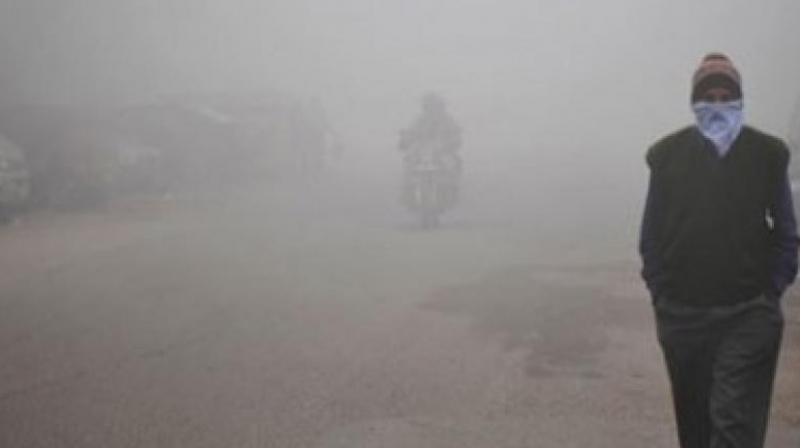Dying Planet: India's air is officially the deadliest in the world
India is breathing toxic air. But here's a clear look at the hard numbers and the real reasons.

India recently woke up to reports that its air was now officially the deadliest in the world. Citing a recent State of Global Air research, international media alerted that the country’s fast worsening air pollution has not only surpassed China but has also led to a dramatic 50 per cent rise in premature deaths between 1990-2015 — causing 1.1 million people to die each year. Back in 2014, the WHO had released its new urban air quality database which showed that India was home to 13 of the 20 most polluted cities of the world. A year prior to that, in 2013, a World Bank study, comparing 132 countries, ranked India last for air pollution, first for pollution’s impact on human health and 126th for environmental performance.
Unarguably, these statistics present a worrisome situation for India. She is found wanting both in development and life chances. Yet, when studies attributing pollution to population growth start pouring in, as David Harvey noted in the Spaces of Capital: Towards a Critical Geography, it is essential to give statistics a close scrutiny. So does More People Equal More Air Pollution? In general, Yes. The world’s most densely populated countries are facing a pollution crisis. But the relationship between pollution and population is not as clear as statistics suggest.
Also Read: How we infected the world
In fact, Ian Angus, editor of Climate & Capitalism, has ripped apart the ‘more people equal more pollution’ thesis. Using real-world figures from 2006, particularly those relating to G20 countries which account for two-thirds of world’s population and nearly 90 per cent of Gross National Product, he showed that CO2 emissions were a problem of rich countries, not poor ones. Moreover, air pollution varies not only with population density, but also with regional differences, says a Nasa study. The research reported that despite large populations, Indian cities showed less NO2 pollution than the study's other regions. In fact, a European city of 1 million people had six times higher NO2 pollution than an equally populated Indian city.
Also, India and China are being labelled as the world’s largest polluters, given that they hold 2/3rds of the world’s population. Do they contribute to two thirds of world’s pollution? Angus had argued that population statistics conceal more inequalities than they reveal. The high industrialisation activities in India and China are blamed for their growing pollution, but such reports do not explain why stricter population control in China did not result in cutting urban pollution? Or why with 5 per cent of the world’s population US contribute to over 25 per cent of the global pollution?
Also Read: Exercising in the smog
A study published in Atmospheric Chemistry and Physics in April last year highlighted that that most megacities in China, India and West Asia indicated a doubling or tripling of NO2 levels during 1996- 2011 while Western Europe, the US and Japan saw “significantly” reduced atmospheric NO2 levels. Bottom line — overall NO2 levels in Indian cities are rising, even as the country strives for economic growth.
The truth is, no group of countries is immune to the dangers of air pollution; even the high-income average exceeds the World Health Organisation’s target of limiting the presence of PM2.5 to no more than 10 micrograms per cubic meter of air. China currently is over five times this level, while France exceeds the recommended level by 40 per cent. Devoid of context, correlation-or-causation problem presented by big numbers remain complex and scary. Observers like Aungus say such reports turn environmental problems into biological problems; advocating only for population control.
This dismal state of India’s air, the State of Global Air reports note, is a product of rapid industrialisation, population growth and an aging populace. The same report applauded US and Europe for a significant decrease in the air pollution due to environmental regulations especially policies to curb carbon emissions. Pollution costs India $80 billion a year amounting to nearly 6 per cent of its GDP, World Bank warned — urging India to reduce carbon emissions by switching to green technology. But, to see whether population growth drives emission levels, Angus says we need to go beyond big numbers and examine real relationships. The improved environment of United States is as much a result of its environmental regulation as the fact that most of its hazardous manufacturing units have moved to the Third World. Similarly, while India’s growing air-toxicity is because of indiscriminate industrialisation and overpopulation, the government’s drive to dilute its green regulations for ‘ease of business’ is only favouring developed countries. In a nutshell then, environmental problems are now primarily political problems awaiting political answers.
The writer is assistant professor of TISS, Guwahati campus. She is also chairperson, Centre for Ecology, Environment and Sustainable Development, School of Social Sciences and Humanities

